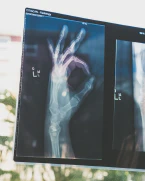Future of Public Health Infrastructure

The Unsung Heroes: Protecting Our Health Every Day
We often overlook the silent guardian ensuring our well-being: public health.
Every breath we take, every meal we savor, owes thanks to public health.
Fire-retardant clothing, safer stairways – all results of public health efforts.
It’s more than vaccines and medicines; it’s woven into daily life.
Jane’s here to explore the essential role of public health.
Reopening Schools: A Delicate Balancing Act
Sending kids back to school, a challenge we must confront.
Infectious kids – what risks do they pose to family and grandparents?
The struggle to balance education and safety, especially for youngsters.
Jane delves into the complexities of returning to the classroom.
Health Disparities: A Stark Reality for Essential Workers
COVID-19’s unequal impact, hitting minority communities the hardest.
Exposure is the villain, with public-facing jobs at the forefront.
Chronic diseases, a heavy burden borne disproportionately by some communities.
Jane discusses the uphill battle faced by essential workers and solutions.
The Path Forward: Strengthening Our Public Health System
Swift response to new health threats, the goal of a robust system.
Well-staffed, well-trained public health entities – as vital as police.
Real-time data, technology’s role in making informed decisions.
Jane explores the blueprint for a resilient public health infrastructure.
Navigating the Complex Path to Reopening Schools During COVID-19
As we grapple with the idea of sending kids back to school, numerous challenges arise. It’s a situation that’s left many parents, including myself, pondering the best course of action.
The central issue here is understanding just how infectious children are and how they fare if they contract the virus. Fortunately, the majority seem to weather the storm relatively well. But there’s a catch, and it’s a big one.
The burning question on our minds: how many germs will our little ones bring home to us and to the grandparents? That’s where the true complexity of this situation lies.
Telling an eight-year-old to avoid their friends or a 17-year-old to do the same is a monumental task. It’s not just about their safety; it’s also about how we can educate them effectively in this new normal.
One intriguing idea, proposed by Uri, is to stagger school schedules, reducing the number of kids in each classroom. Smaller class sizes, after all, often lead to better education outcomes.
But here’s the kicker: we need enough teachers to pull this off. The availability of qualified educators might be the rate-limiting factor in this equation.
So, the million-dollar question remains: how do we strike the right balance and ensure our kids get the education they deserve while minimizing risks to their health and those around them?
It’s a puzzle we’re all trying to solve together.
Tackling Health Inequalities: The Essential Workers’ Struggle
In the relentless battle against COVID-19, certain communities find themselves bearing the brunt of this invisible enemy. It’s an issue close to my heart, and today, I want to shed light on the disparities essential workers face.
Primarily, we’re talking about our fellow citizens from African American and Latino backgrounds. These communities seem to be disproportionately affected by the virus. Why? It comes down to exposure, plain and simple.
Many essential workers hold public-facing jobs, making them more vulnerable to the virus. Think bus drivers, grocery store clerks, long-term care facility employees, and those working in meatpacking facilities or chicken farms. They are the unsung heroes who brave the front lines daily.
But exposure isn’t the only factor at play here. Susceptibility also plays a significant role. Many individuals in these communities battle chronic diseases like diabetes, heart disease, and lung disease. Sadly, these pre-existing conditions make the virus even more potent and dangerous.
The real challenge is that many of these essential workers are the very people we’ve deemed indispensable during this crisis. They have to go to work, and there’s no way around it.
So, what’s the solution, you ask? Well, there’s no one-size-fits-all answer, but I’ve got a few ideas.
First, we need to revamp our testing strategy. It’s time to prioritize not just clinical testing but also testing for public-facing essential workers. Think nursing home staff, hospital employees, bus drivers, security guards, and grocery store clerks. They should have access to frequent testing to protect themselves, their families, and the public’s trust.
Take, for example, the folks working in meatpacking plants. Their workplaces are often shoulder to shoulder, a breeding ground for the virus. We must figure out ways to introduce physical distancing on the assembly line. And Uri’s concept of reducing the number of workers in close proximity could apply here as well.
The key is ensuring these essential workers are not sacrificial lambs but essential, protected pillars of our society.
Moreover, these disparities aren’t unique to the United States. We’re witnessing similar patterns worldwide, where race and class intertwine with the types of jobs people do.
This issue isn’t new. We had early warning signs when we saw data from China indicating that individuals with chronic illnesses faced graver outcomes. We should have acted more decisively back then.
So, what’s the takeaway? It’s a reminder that public health is everybody’s business. We must adopt a proactive approach that safeguards the health and well-being of all, especially those who’ve been disproportionately affected.
Let’s keep the conversation going and work together to bridge these disparities and create a healthier, more equitable world.
Fortifying Our Defenses: Crafting a Stronger Public Health Framework
Today, I want to dive into a topic that’s often overlooked but holds the key to our collective well-being: public health infrastructure. It’s a crucial aspect of our society, and as we reflect on the past, we must plan for the future.
Imagine a world where we can swiftly identify, contain, mitigate, and even eliminate new health threats as they emerge. That’s the goal of a robust public health system—one that stands shoulder to shoulder with our police, fire, and EMS services.
To achieve this, we need well-staffed and well-trained public health entities. These professionals are the unsung heroes working tirelessly behind the scenes to protect us. It’s imperative that they’re well-paid and well-resourced, equipped with the tools and knowledge necessary to face any challenge head-on.
Now, let’s talk technology. We live in an age where data is power, and we must harness it effectively. No more relying on pen and paper or outdated spreadsheets. We need state-of-the-art technology that allows us to access real-time information, make immediate decisions, and collaborate seamlessly.
I recall a visit to Taiwan, where I witnessed real-time data flowing from their electronic medical record system. It was awe-inspiring. We have the technology; we need to invest in it and ensure it keeps pace with our needs.
But technology alone won’t save us. It’s a powerful tool, but it cannot replace human expertise. We must remember that. Instead, it can amplify our capabilities. It can provide situational awareness, facilitate data analysis, and enable collaborative research.
One significant advantage of technology is the ability to double-check our work. Take modeling, for instance. It allows for multiple sets of eyes to scrutinize the data, promoting accuracy and accountability.
However, technology’s Achilles’ heel is obsolescence. We must commit to its continuous development and improvement. We can’t afford to fall behind, especially when it comes to safeguarding public health.
In closing, our vision should be a future where we’re always one step ahead of health threats. A future where our public health infrastructure is a shining example of efficiency and adaptability.
We have the tools, the knowledge, and the capacity to make this vision a reality. Let’s work together to build a healthier, safer world for all.
Conclusion
In our journey through the vital realm of public health, we’ve uncovered the unseen forces that shape our daily lives. It’s a world of tireless dedication, one that often operates quietly in the background, but its impact is profound.
As we confront the challenges of reopening schools amidst a global pandemic, address health disparities among essential workers, and envision a future with a fortified public health infrastructure, we must remember that health is a shared responsibility. It’s not just the domain of experts; it’s something we all play a role in.
The past has shown us that the health of our communities is intricately woven into our social fabric. It’s not just about vaccines and medicines; it’s about the air we breathe, the food we eat, and the environments we inhabit.
Our journey has also illuminated the disparities that persist, affecting the most vulnerable among us. We’ve seen how essential workers, often from marginalized communities, bear a disproportionate burden. Their resilience and dedication deserve our utmost respect and support.
Looking ahead, we have the power to shape a brighter future. We can build a robust public health infrastructure, one that stands ready to face emerging threats with speed and precision. We can harness the potential of technology while recognizing that it’s our collective knowledge and expertise that drive progress.
In this world of interconnected challenges and opportunities, our commitment to public health can pave the way for a healthier, safer, and more equitable society. Let’s continue to learn, adapt, and work together, ensuring that the lessons of the past guide us towards a better tomorrow.












